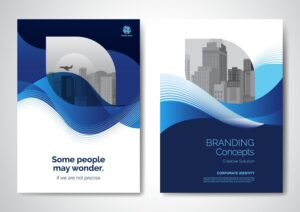Introduction
In today’s digital marketplace, content is more than just words—it’s a powerful business tool. Well-crafted content has the ability to engage readers, build trust, and drive them to take action. But here’s the challenge: not all content converts. For businesses, writing persuasive and strategic content can mean the difference between missed opportunities and increased sales.
This guide explores proven strategies to help you write content that converts, ensuring every blog post, ad, or email drives measurable results.
Why Conversion-Driven Content Matters
Content that converts goes beyond awareness—it drives readers toward action. Whether it’s signing up for a newsletter, booking a service, or making a purchase, conversion-focused writing helps businesses achieve tangible outcomes such as:
-
Higher lead generation
-
Improved customer engagement
-
Increased ROI on marketing efforts
-
Stronger brand trust and authority

Tips for Writing Content That Converts
1. Know Your Audience Inside Out
The foundation of conversion-driven writing is understanding who you’re talking to. Create detailed buyer personas that define:
-
Age, interests, and pain points
-
Buying behavior and motivation
-
Preferred communication style
When your content speaks directly to a reader’s needs, they’re more likely to take action.
2. Start with an Attention-Grabbing Headline
Headlines are your first impression. A strong headline should be:
-
Clear: Avoid vague wording.
-
Benefit-driven: Highlight what the reader will gain.
-
Curiosity-inducing: Encourage clicks without being misleading.
For example:
-
Weak: “Our Services Explained”
-
Strong: “Boost Your Business Growth with Proven Digital Strategies”
3. Use Persuasive and Benefit-Focused Copy
Readers don’t just want features—they want solutions. Instead of saying:
-
“Our software has advanced tracking tools.”
Say: -
“Track performance in real time and make faster business decisions.”
Always emphasize benefits over features to connect emotionally with readers.
4. Incorporate Strong Calls-to-Action (CTAs)
Your content must guide readers toward the next step. Effective CTAs are:
-
Action-oriented: Use verbs like “Download,” “Start,” “Discover.”
-
Clear: Keep it short and to the point.
-
Visible: Place CTAs strategically (beginning, middle, and end).
Example: “Get your free consultation today and start growing your business.”
5. Leverage Storytelling
Stories humanize your content and make it relatable. Share:
-
Customer success stories
-
Real-life use cases
-
Behind-the-scenes experiences
Storytelling creates an emotional connection that leads to higher conversions.
6. Make It Easy to Read
Readable content keeps readers engaged. Use:
-
Short paragraphs and sentences
-
Bullet points and subheadings
-
Simple language instead of jargon
The easier it is to consume, the more likely readers are to stay until the end—and act.
7. Optimize for SEO Without Compromising Quality
SEO helps attract traffic, but conversion comes from high-quality content. Use keywords naturally in:
-
Titles and headings
-
Meta descriptions
-
Body text and CTAs
This balance ensures your content is both discoverable and persuasive.
8. Build Trust with Proof
People need assurance before taking action. Use:
-
Testimonials and reviews
-
Case studies with results
-
Statistics and industry data
Proof builds credibility and reduces hesitation in decision-making.
9. Test and Refine Your Content
Conversion is not static. Use A/B testing to measure what works best, such as:
-
Different headlines
-
CTA placements
-
Content formats (blogs, videos, infographics)
Analyzing performance helps you continuously improve.
Conclusion
Writing content that converts requires more than creativity—it demands strategy, persuasion, and a deep understanding of your audience. By combining powerful headlines, benefit-driven copy, trust-building proof, and clear CTAs, businesses can create content that not only attracts but also drives real results.
Remember: the goal of content is not just to be read—it’s to inspire action.
Explore more related articles to deepen your understanding
Best Fonts for Branding: Create a Lasting Visual Identity
SEO Content Writing: A Complete Guide for BeginnersDoes Google use Cloudflare
Content Writing Basics: A Beginner’s Guide to Effective Writing







